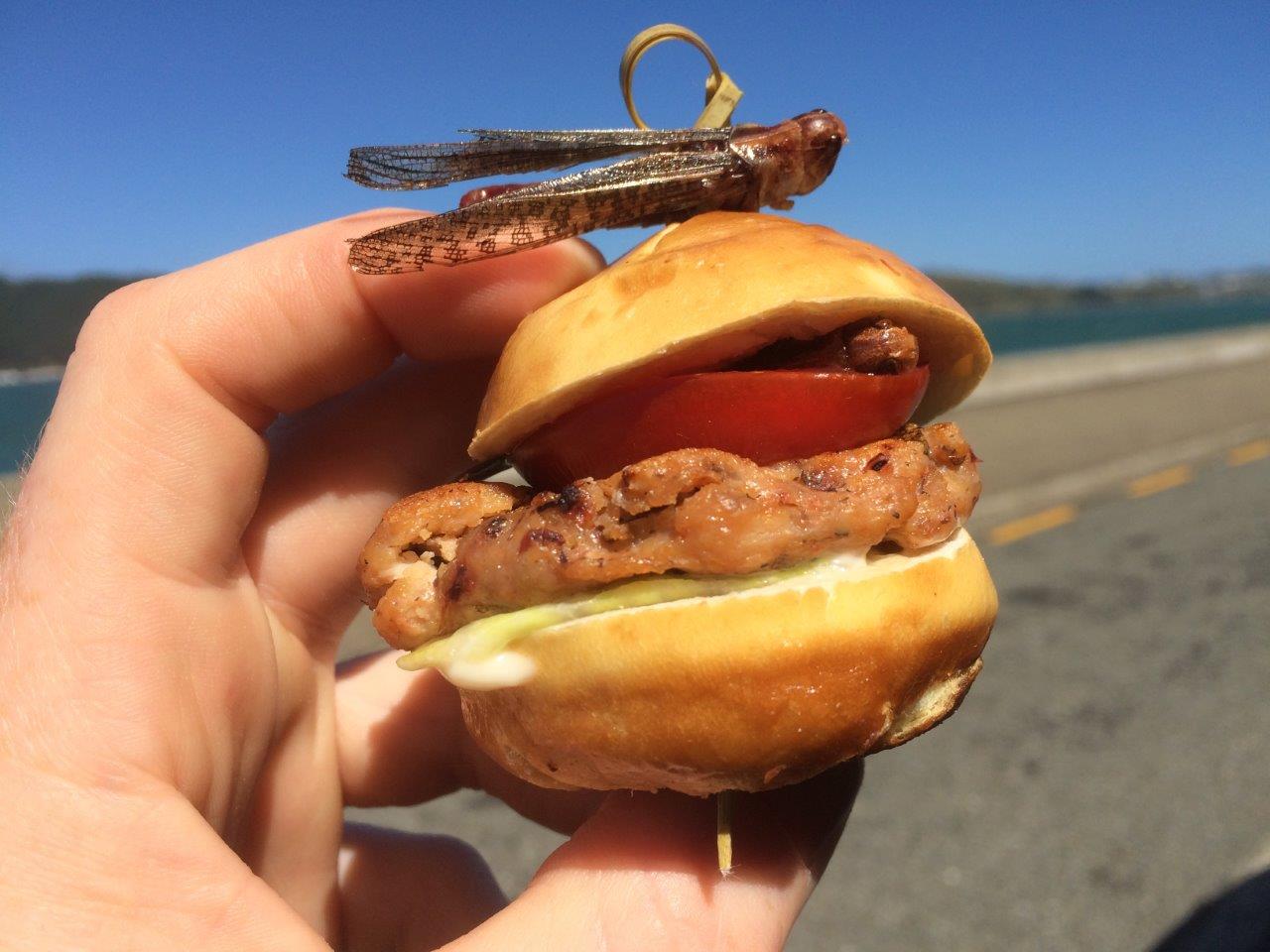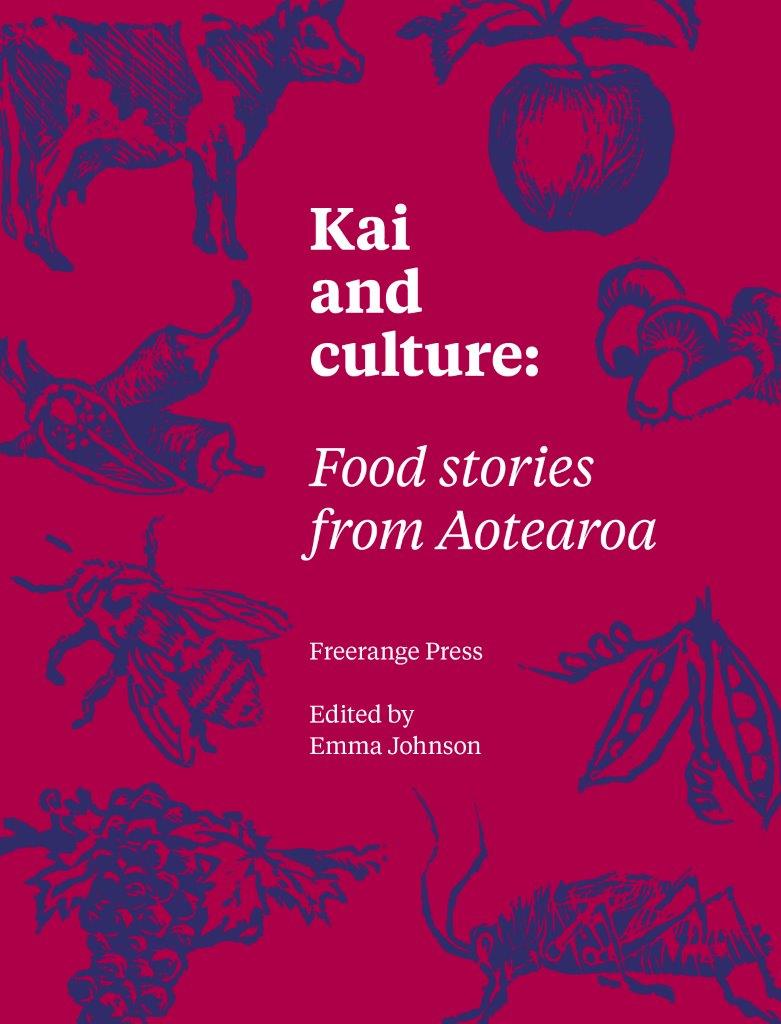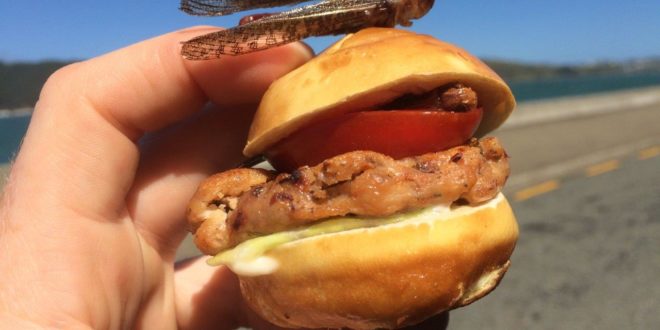 Future Generations will very likely eat very differently from how we eat today. Insects may well be the answer to providing the world’s population with sufficient protein!
Future Generations will very likely eat very differently from how we eat today. Insects may well be the answer to providing the world’s population with sufficient protein!
In Canterbury the commercial potential of edible insects such as Ants, Locusts, Huhu Grubs and Cricket powder is being investigated by Anteater.
To give you a taste of the amazing food chefs are already creating with their products feast your eyes on this photograph reproduced from Anteater of a Locust Slider with ant aioli (Te Papa Museum).
Anteater’s story is included in Kai and Culture: Food Stories from Aotearoa in which writers, academics and producers have come together to cook up essays, profiles and recipes that explore Aotearoa’s contemporary food culture and an emerging, evolving New Zealand food identity.
There is plenty of food for thought in this miscellany! Here is a small taste:
Food Rescue
In Diverting Resources: Kaibosh Food the disturbing statistic that New Zealanders waste a mindboggling 122,547 tonnes of food per year is quoted! But with the help of supermarkets and gardeners Kaibosh Food Rescue is taking action to remedy this by collecting good healthy food that would otherwise go to waste. They deliver it to low income families who would not be able to otherwise afford it.
The Economic Divide
In Cakes, community meals and charity: Responses to food Insecurity Rebekah Graham points out that while there is an increasing trend for consumers to want to buy healthy local food there are also disturbingly large numbers of New Zealanders who have so little money to spend on food that this is not an option.’
She argues that while charitable food aid is a popular response to hardship it doesn’t address the underlying problem. A way of solving it is to acknowledge that affordable, nutritious food is a human right and for the state to ensure sufficient incomes or adequate social security
The Self-sufficient Gardener
In Is self-sufficiency worth it? The value of the Green Pea Fiona Somerfield enthuses about the value of growing your own vegetables. This she says is not only an option for those who can afford large sections or life-style blocks. ”Gone are the days of one big garden with military style rows of vegetables”
Make use of all the available spaces! You can grow tomatoes in pots, use tall fences to grow peas and beans, and shaded spots can support lettuces and greens like silverbeet and spinach.
Preserving our Fruit Trees for Community Use
Using what we have: Residential Red Zone Rehabilitation is the inspiring story of how after the Canterbury Earthquake, Greg Quinn, an orchardist developed a plan for involving the community in taking care of the fruit trees that were left standing after the houses were demolished .These trees will be now be able to keep feeding the community in the years to come.
Retaining ownership of the land
In The Potential of kaitiakitanga: Kai Ora Honey the refusal by a whanau based Manuka honey business, to sell their business foreign buyers is explained.
Kai Ora Honey’s philosophy is based on their grandmother’s value of kaitiakitanga (looking after the people and the land). They feel that “Foreigners would not be able to understand the values and the stewardship that we need to maintain for our iwi, our people and our whenua.” So their focus will remain on building their business themselves and on passing something better on to the next generation.
Recipes:
At the end of this book there is a potluck of recipes from the contributors to this book
Included are Fleur Sullivan’s famous fish chowder, a vegan Berry Cholate Mousse made from only three ingredients from David White, a warming street style egg noodle dish which Dajian Tai enjoyed when he was growing up in North China, and beach spinach pesto from forager Peter Langlands.
 Getting into your own kitchen and trying out some of them is the DYO way of getting a handle on our evolving food culture.
Getting into your own kitchen and trying out some of them is the DYO way of getting a handle on our evolving food culture.
Kai and Culture: Food Stories from Aotearoa is a great introduction to some of the current issues that are involved in the growing, making and eating of food.
I really enjoyed reading about the passionate growers, wine makers, fishermen and chefs we have in New Zealand,
They provide us with great food, are innovative but also care deeply about our environment.
We all share in the experience of food so I think there is many a chapter in here that would make a great conversation starter over dinner, or at book club!
Title: Kai and culture: Food stories from Aotearoa. Edited by Emma Johnson. Published by Freerange Press. RRP $50.
Reviews by Lyn Potter
Parent and grandparent, Avid traveller, writer & passionate home cook









Join the Discussion
Type out your comment here:
You must be logged in to post a comment.